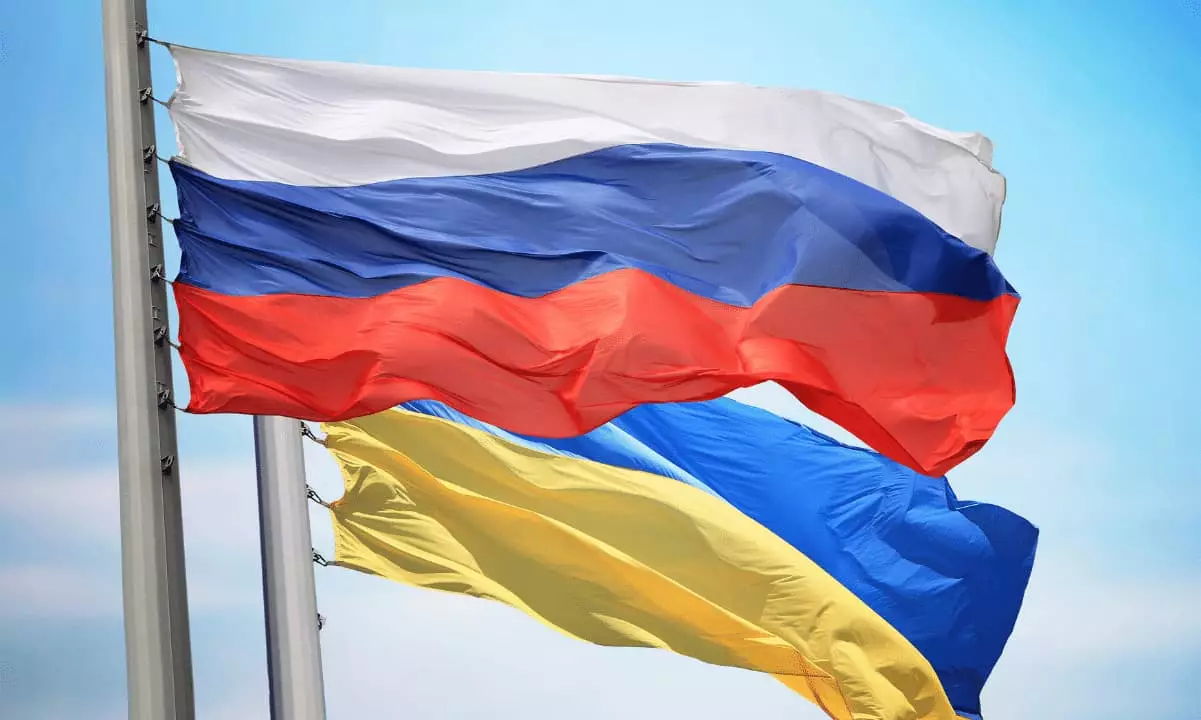Ukraine and Russia have increasingly established themselves as significant players in the global cryptocurrency landscape, achieving notable rankings in the recently released Global Crypto Adoption Index. According to a Chainalysis report, these countries are now ranked 6th and 7th respectively, with Russia exhibiting the most impressive rise, jumping six places from its previous standing. This shift comes against a backdrop of ongoing conflicts and heavy sanctions, underscoring the resilience and adaptability of these nations in the face of adversity. The data paints a compelling picture of how geopolitical factors influence market behavior and the adoption of new financial technologies.
In Eastern Europe, cryptocurrency inflows are surging, with Russia attracting a staggering $182.44 billion and Ukraine closely behind at $106.1 billion. This trend is indicative not only of the growing interest in decentralized finance but also of the shift towards a more digital economy. Decentralized exchanges (DEXs) have proven to be particularly influential in this regard. Collectively, DEX platforms across Eastern Europe have seen an influx of around $149 billion, revealing a clear preference for the relative anonymity and lower barriers of entry that these exchanges offer. Notably, Ukraine has reported a dramatic increase in DEX activity, with inflows climbing by over 160%, culminating in $34.9 billion, while Russia experienced an even more pronounced growth of 173%, reaching $58.4 billion.
Delving deeper into the transaction dynamics in Ukraine and Russia, the data indicates two key trends shaping the DeFi landscape. Ukraine, in particular, has witnessed a staggering 361.49% increase in large institutional transactions exceeding $10 million, signaling the entry of significant capital into the crypto space. This could imply that institutional investors are recognizing the potential of cryptocurrencies as robust financial instruments. Conversely, Ukraine also saw substantial growth in smaller retail transactions, with increases of 82.29% and 91.99% respectively. This dual increase suggests a broader base of crypto adoption among everyday consumers, highlighting how ordinary citizens are turning to digital currencies for both investment purposes and daily transactions amidst rising inflation and economic uncertainty.
Interestingly, the popularity of local crypto services in Russia is on the rise as well. Amid financial sanctions that have hindered traditional banking operations, Russians are flocking to decentralized, no-know-your-customer (KYC) exchanges. While traffic to centralized exchanges has stagnated, these local platforms have seen a significant uptick in user activity. This shift highlights a broader trend where individuals are seeking alternative means to convert their fiat currencies into crypto, not out of mere curiosity but necessity, driven by the restrictions imposed on conventional banking avenues. Chainalysis indicates that this inclination is likely a direct response to sanctions impacting the liquidity of Russian fiat currencies.
As Ukraine and Russia navigate their unique geopolitical challenges, the adoption of cryptocurrency presents both a solution and a pathway to financial autonomy. The remarkable growth in both institutional and retail transactions signals a profound transformation in how individuals and entities in these countries perceive and utilize digital assets. This evolution reflects not merely a trend but a seismic shift in financial culture, revealing a burgeoning crypto economy poised to influence global markets for years to come. In this context, monitoring these countries will provide valuable insights into the future of cryptocurrency adoption worldwide.











